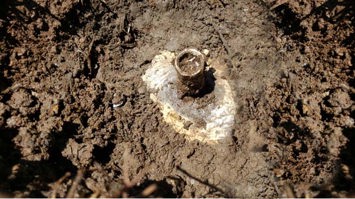
Key pipeline leak detection updates
While the COVID-19 pandemic continues to present some key additional challenges for pipeline operators, it has been another busy quarter for Atmos International (Atmos).
Quarterly achievements
- Simulated leak of 1.6m3/h detected in five minutes
- Leak response end user training sessions delivered
- Ten Factory Acceptance Tests (FATs) completed
- Nine Site Acceptance Tests (SATs) completed
- Eight illegal tapping points for pipeline theft detected
Here are some of the handpicked stories from how we’ve been helping customers around the world during the last quarter of 2021.
Successfully detecting pipeline theft activity
Thieves are constantly evolving the methods they use to steal product out of pipelines. It’s important to consider a strategy for theft detection to work alongside your leak detection system (LDS).


One European customer used Atmos Wave Flow to successfully identify numerous theft events. The thieves were bold, stealing from the pipeline for three nights in a row on one occasion.
After working with the customer to investigate the theft activity and with the data from Atmos Halo sensor, we were able to provide an accurate location of the tapping point. It was found around 40 meters away from the calculated leak location. The theft was a sophisticated operation, with double isolation valves on the tapping point and a portable pipe bend and hose connected to 6 intermediate bulk containers (IBCs) stored on a truck.

Leak response training delivered to end users
We know the importance of training end users to understand how to use our systems, they are the human side of pipeline leak detection. Having the knowledge to take the next actions in response to leak alarms is critical for minimizing the consequences.
This quarter we delivered several training sessions to various customers around the world for our systems including Atmos Wave, Atmos Pipe and Atmos Theft Net.
Training sessions like these include important information to help customers get the best out of their LDS. The content of the training is dependent on the customer needs but typically includes aspects such as:
- An overview of the theory of how the LDS works
- How to interact with the related applications
- Basics around hydraulics behavior
- How to analyze data using examples extracted from customer data
- Troubleshooting and questions
Customers are always encouraged to keep in regular communication with Atmos, to advise on any physical changes in the pipelines and maintenance work that might affect the LDS.
Real leak found during commissioning for fuel hydrant LDS
While commissioning the Atmos Tightness Monitoring System for a customer in South East Asia, a real leak in the fuel hydrant system was discovered. The Atmos Tightness Monitor completed the tightness monitoring tests in 30 minutes, minimizing the impact to the airport operations, using the pressure-step method.
The test consists of two stages:
- A high pressure stage
- A low pressure stage
The Atmos Tightness Monitor was able to discover the pipeline leak with a size estimate of 3.9 l/hr. By applying some physics and comparing the pressure response between the two stages, we could distinguish between leak and leak free conditions during fine tuning. This ensured the system worked with the upmost accuracy.
Discover our solutions
Learn more about our solutions for leak and theft detection. Explore our range of solutions now.
